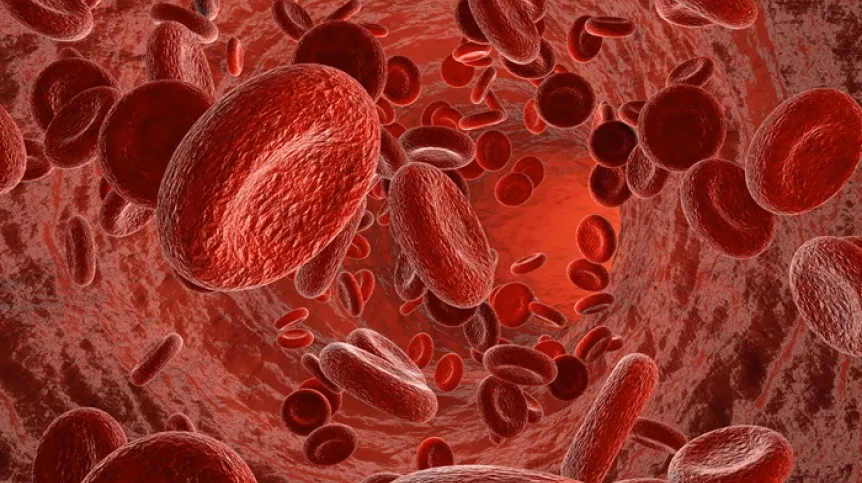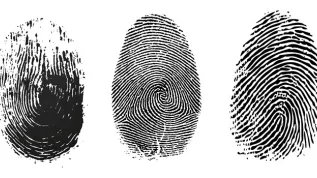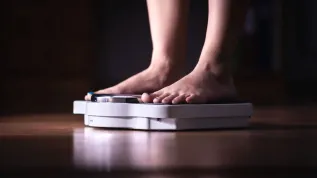
‘Our discovery, to put it simply - synthetic blood, thanks to which the heart, kidney or liver will remain useful for transplantation for a longer period, and their quality will be better - may significantly affect transplantology’, says chemical engineer, nanotechnologist and biologist Professor Tomasz Ciach.
Professor Ciach is the head of Department of Biotechnology and Bioprocess Engineering at the Faculty of Chemical and Process Engineering at the Warsaw University of Technology, and the founder of the Biomedical Engineering Laboratory and several technology companies.
PAP: Please tell me to what extent the preparation you created, that we will call artificial blood for simplicity, is something unique on a global scale? I am asking because I know that many laboratories in various countries have worked and are working on similar substances.
Professor Tomasz Ciach: That is true, we are not the first to work on this. For example, the Russians did it during the war in Afghanistan, there were many similar projects in Mexico and the United States. However, to this day these substances have not been approved for use as blood substitutes, so everything remains ahead of us.
In addition, the novelty of what we do consists in using new chemical compounds and improving the technology for obtaining synthetic blood. We also approached the difficult issue of registering the preparation differently. We intend to first register our preparation not as a blood substitute, but as a fluid for organ perfusion - i.e. with its help, the heart, kidney or liver will be flushed in order to keep them alive before they are transplanted into the patient's body.
Research on various types of blood 'diluents' has been done for many years, our fluid has the advantage over others because it carries respiratory gases - it supplies oxygen and removes carbon dioxide, so it sustains life. Today, organs intended for transplantation are stored at low temperatures to slow down their metabolism, but they still have to be transplanted a few hours after collection at the latest, because their 'use-by date' ends.
Thanks to our discovery, organs can function normally, at a temperature similar to that of the human body, for several days or even weeks, and they do not lose their value.
I imagine that 'libraries' with organs flushed with our fluid could be created, where organs will wait for patients who need them.
Another fantastic thing is possible thanks to it: we will be able to treat those organs that come to us in imperfect condition. For example, we will pass strong drugs in high concentrations along with the fluid through a kidney with a cancerous tumour, which would be impossible to do in the case of an entire person, because they would simply kill the patient. Or imagine a liver, tired of the riotous life of its owner - outside the body, it will be able to focus on its own regeneration, instead of metabolising toxic substances, so in a dozen or so days it will be as good as new.
PAP: Why is it more difficult to register a product as a blood substitute than as one used for organ perfusion?
T.C.: Because the organs are rinsed before transplantation, so this fluid will not enter the patient's body. It can be legally treated as a 'medical device'. It is a different matter to administer it instead of blood, directly to a sensitive human body - the requirements are stricter here. Figuratively speaking - registering a fluid for perfusion, or the entire device, will resemble registering a syringe, and registering a blood substitute - a drug. Therefore, in the second phase, when we want to register it as a blood substitute, we will have to prove that it is harmless to the entire organism.
However, I would like to point out that this preparation will not fulfil all the functions of blood, which are much broader than just oxygen management. It does not contain, for example, erythrocytes or leukocytes, proteins, signalling substances, etc. Of course, I do not rule out that we will develop and expand it in the future, but today we have to finish working on its basic version.
PAP: How long will it take to register it as a perfusion preparation?
T.C.: If we are lucky and have money, I think that registering the system for storing organs is a matter of three to four years, and synthetic blood - three to six years.
PAP: That is a long time.
T.C.: You don't have to tell me that. I got involved in these medical products quite a few years ago and sometimes I regret it, because I'm running out of patience. And I don't know what I need more - luck or money. The latter for sure, because one experiment, like the last one with a pig into which we transplanted a kidney, which worked for 12 hours supplied with our fluid, costs several hundred thousand złotys.
That is why, although we started working on this project at the Warsaw University of Technology, it is now being developed in a listed company, which I founded myself. We mainly use money from private investors, we also apply for research funding from various programs at the Ministry of Health and the European Union, but there is still not enough money.
PAP: I am convinced that everything will go well, because you have no shortage of luck - you have introduced several innovative medical products to the market. Please tell us how it all started.
T.C.: Let's start with the fact that I really wanted to be a doctor, but my mother, a doctor, said that it would be over her dead body and sent me to work as a ward nurse for her colleagues in orthopaedics department over one summer. I really liked it, until a patient died in my arms on the ward. I was a kid in the third year of high school at the time and I said 'never again'. So I went to the Polytechnic, to study chemical engineering. But medicine still appealed to me, so after the third year of chemical engineering I started parallel studies in biology. After my doctorate, I worked at the Technical University in Delft, in the Netherlands, dealing with systems for inhaled drug delivery, we developed the formulation of asthma drugs, and that was how my return to medicine began.
When I returned to Poland after a three-year stay in the Netherlands, I decided to work on the border of technical and medical sciences. The first project I managed to complete was developing a technology for coating coronary stents that secrete drugs (if anyone doesn't know - stents are springs that are inserted into heart arteries to make a little more room for blood flow). It is a good technology, these stents are still on the market.
Then I found out that catheterising patients is very painful and sometimes patients run from doctors who want to remove the catheters. I bought a catheter in a pharmacy, felt it - ooh, I really wouldn't want anyone to insert something like that into my urethra.
Previously, I took part in a large, nationwide project to develop antithrombotic coatings for artificial heart chambers for Professor Religa's clinic. Our technology was not selected for the final project, so I decided to modify it and adapt it to catheters - to make them smooth and slippery, and to add an analgesic and antibacterial layer. Our catheters are still manufactured in Poland and enjoy a good reputation among patients.
Then I started doing more complex research and we made nanoparticles for diagnostics and cancer treatment, and in 2011 we started working on artificial blood, so as you can see it has already taken us more than a decade. The results are very good, but it takes a lot of time and money.
Recently my doctoral candidates rebelled, they said they wanted to do something that wouldn't take so long. And they used genetic engineering technology to make a face cream containing a toxin produced by genetically modified bacteria modelled on those produced by poisonous Conus magus snails. They claim that it works like Botox. Customers are very satisfied, we have been selling the cream for several months. The research took a total of four years, which seems long, but much shorter than in the case of drugs.
PAP: Do you have an idea what you will work on when you finish with artificial blood?
T.C.: I have a lot of ideas, although I think that work on the blood prosthesis will take some time, because even after we register it, when it enters the market, we will want to improve it. In addition, we are working on systems for delivering drugs to the eyeball, on systems for delivering gene therapy agents, we have advanced research at the university on a new type of dressing for wounds that are difficult to heal - e.g. pressure sores or diabetic foot.
We are working on methods for producing 'custom' bone implants printed on 3D printers, on blood vessel prostheses made of nanofibres, nanoparticles for cancer therapy.
Things are still going on, although it is increasingly difficult to find young people willing to work hard in the laboratory, which, although it gives great satisfaction, does not pay well and requires a lot of sacrifice.
I realize that I am close to retirement and I should rather take on topics that can be 'delivered' faster, because real satisfaction does not come from research for research's sake, but from research results that help someone. A patient's smile during clinical trials of a new product is worth a million dollars.
Video material available at: https://wideo.pap.pl/videos/75456/
Interview by Mira Suchodolska (PAP)
mir/ jann/ kap/
tr. RL













